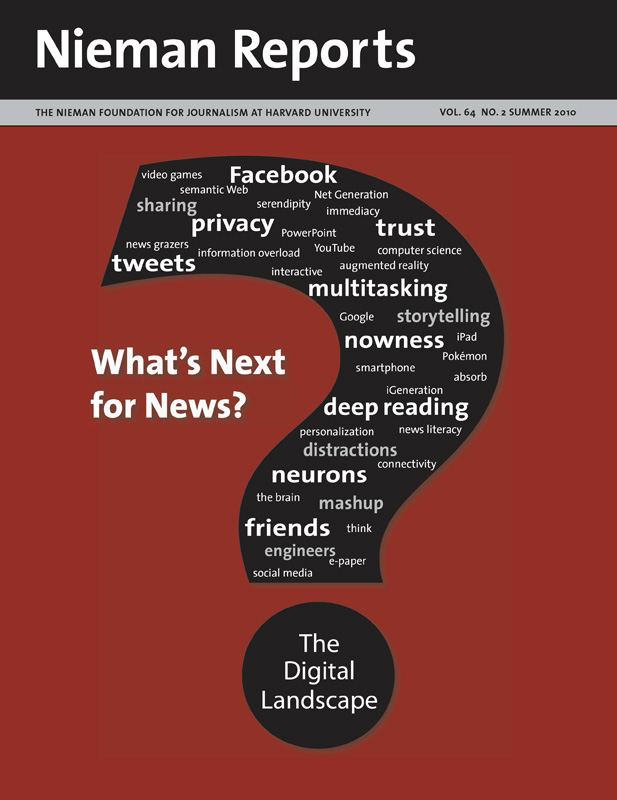
Non Sequitur © 2010 Wiley Miller. Used by permission of UniversalUclick. All rights reserved.
Journalism resides in the technological landscape of its time. Whether on parchment or paper, via the telegraph, radio waves, or TV signals, significant occurrences and utterances of a community have been revealed through words, written or spoken, and images, drawn, filmed or photographed by the people observing them. In thinking about the telegraph’s effect on 19th century communication, the late James W. Carey noted that by rendering geography irrelevant, what had been a personal connection of journalist to readers was severed. And the constraints of transmission, Carey wrote, “made prose lean and unadorned,” while at the same time words were tugged away from their colloquial roots and pushed toward a style striving for the tone of objectivity. Familiarity no long seemed the right touch with the expanding breadth of audience. All of this, Carey concluded, “led to a fundamental change in news.”
A decade into the 21st century, the contemporary digital conveyors of news and information only underscore in our minds the telegraph’s slow and limited capacities. Yet as we think about our modern day digital landscape in the context of journalism’s possibilities, perhaps it’s wise to recall the interwoven tapestry of journalistic changes that Carey remarked upon as the use of the telegraph became widespread.
In this issue of Nieman Reports, journalists and commentators, teachers and high school students, reading researchers and neuroscientists trek through our contemporary digital landscape, mapping and exploring various pathways that journalists use or might soon discover. When phrases such as “information overload” and “news literacy” bump up against “augmented reality” and “semantic Web,” it behooves us to ask how this digital landscape is affecting the experience of producing and consuming news and information. It’s a good time to look, too, at what we are learning about the human brain’s capacity to absorb and process what technology’s advances make possible for journalists.
From finding out how the younger among us use digital devices to wondering whether any technology can replicate the experience of deep reading, our writers stretch their thinking and ours. A word of thanks is extended to Andrew Finlayson, a Knight Journalism Fellow at Stanford University, whose own thinking about this topic coincidently arrived one day in my e-mail just as we were starting this project. In turn, he led us to several other Knight fellows as well as professors and speakers he’d heard, and their words, like his, now contribute mightily to this conversation.



